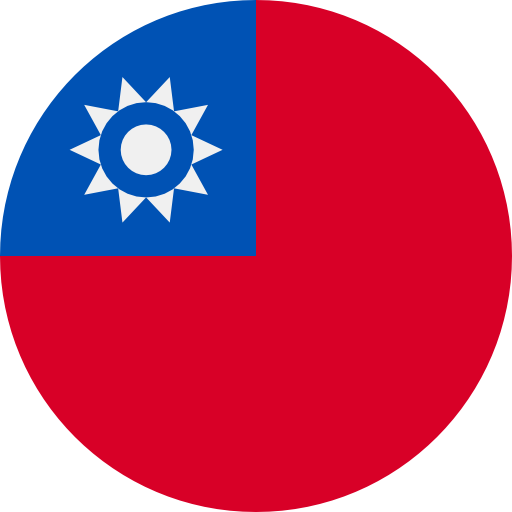Reports
New and Emerging Therapies for Acne and Rosacea
Presented by: Diane S. Berson, MD, FAADWeill Cornell Medical College, New York, New York, NY, USA
- New topical and oral therapies will soon be available to treat acne and rosacea, including antibiotic-benzoyl peroxide (BP) combinations and retinoids.
- Updated expert recommendations indicate that tretinoin patients need not delay undergoing certain procedures.
- Dietary composition is increasingly shown to impact acne and rosacea.
Topical therapies for acne and rosacea offer local efficacy without systemic adverse effects. These treatments are effective for lesions, inflammation, and scars. New oral treatments are also available, including those for neck and back areas, and those with improved absorption taken with or without food. New laser treatments and microneedling advances offer better outcomes for acne, rosacea and scars.
- Several new topical and oral treatments will soon be available to treat acne and rosacea, with increased efficacy, reduced adverse effects, greater patient convenience or improved absorption.
- Prior recommendations against performing procedures during or shortly after trentinoin treatment are updated, with experts recommending that certain procedures may be safely performed.
- Nutrition may play a role in prevention in patients for whom dietary factors such as whey, casein, alcohol, and caffeine are associated with dermatoses.
- New laser treatments and microneedling advances offer promise for acne, rosacea and scars.
Several new combination topical treatments consisting of antibiotic with BP will soon be available, including :
- Erythromycin 3%-BP 5 % pack. This offers an 8-month shelf life, with no need for refrigeration, which facilitates portability.
- Adapalene 0.3-BP 2.5%. Used for acne treatment and post-treatment maintenance of clear skin, it offers a decrease in the number and size of atrophic scars
- Tretinoin-BP. This treatment contains a retinoid and anti-microbial and uses a dual chamber pump to prevent BP from decreasing the stability of tretinoin.
- Tretinoin lotion 0.05%. This lotion offers increased penetration into sebaceous follicles, and a hydrating vehicle including agents such as glycerin, HA, and soluble collagen.
- Tazarotene lotion. Currently in phase 3 studies, this treatment is expected to be available in an emulsion technology.
- Trifaroten. Currently in phase 3 trials, this treatment show promise for acne on the face and trunk.
- Hypochlorus acid, an antimicrobial facial cleanser, is effective for mild to moderate acne, targeting bacteria, virus, fungus, spores, and MRSA (methicillin-resistant Staphylococcus aureus), while also having anti-inflammatory properties.
- Minocycline gel (BPX-01) 2% has demonstrated a 59% reduction in inflammatory acne. Minocycline gel (BPX-04) 1% is presently being studied for papulopustular rosacea at lower concentrations than for acne.
- Minocycline foam (Fmx 101) 4% formulation has demonstrated a significant reduction in number of lesions and improvement of IGA. Minocycline Foam 1.5% (Fmx 103) is presently being studied for papulopustular rosacea at lower concentrations than for acne.
- Clascoterone 1% cream, the first topic antiandrogen, with androgen receptor inhibition as the mechanism of action; it inhibits sebum production and inflammation with no systemic side effects.
- Ivermectin cream 1%. This rosacea treatment has both anti-inflammatory and anti-parasitic properties, and demonstrates an 83% reduction in inflammatory lesions, with a reduction in demodex mites.
- Oxymetazoline HCl 1% cream. This vasoconstrictor is effective in the treatment of erythematous telangiectatic rosacea without causing rebound redness or flushing.
- Sarecycline. This new and emerging acne therapy is a narrow spectrum tetracycline-derived antibiotic with anti-inflammatory properties, for the treatment of moderate to severe acne of the chest and back, in patients aged 9 years or older.
- Lidose. This oral formulation of iostetinoin offers advantages over prior therapies because it can be taken with or without food, reducing absorption issues that occurred with the prior formulations.
- Isotretinoin. Prior recommendations that procedures not be performed on patients during, or within 6 months following tretinoin treatment are updated. The consensus recommendations based on an expert survey over 100 dermatologists finds that there is insufficient evidence to support the six-month delay for the following procedures : superficial chemical peels, skin surgery, laser hair removal, fractional nonablative laser procedures, vascular and pigmented lesion lasers.
- Microbiome. A microbiome imbalance is barrier defect implicated in dermatoses. Cutibacterium acnes is present in most people and can have healthy benefits; however; virulence-related genes are involved in production and transport of bacterial toxins that are pro-inflammatory and more abundant in acne patients. To treat acne by restoring the microbiome balance, probiotics are more targeted than antibiotics, and antibiotics with probiotics may be useful in reducing acne symptoms.
- Diet. The role of diet in acne and rosacea treatments is evolving. High glycemic index foods are likely to increase acne symptoms in patients prone to acne, as are skim milk products containing whey and casein. The Mediterranean diet improves symptoms for patients with acne or rosacea, as does a low glycemic diet, which lowers androgen bioavailability, effects sebum production, and decreases inflammation. For rosacea patients, caffeine is associated with a decreased incidence of rosacea, while white wine and liquor is associated with an increased risk.
- Particle assisted laser treatment. These laser treatments target sebaceous follicles, decreasing acne symptoms. The three mechanisms of action include : selective photothermolysis of blood vessels; phototoxic or bactericidal effect; and photothermal effect.
- Microneedling. This procedure is used for anti-aging, acne scars, pores, and controlled wound healing.
Key Messages/Clinical Perspectives
- Several new topical and oral therapies including antibiotic-BP combinations are available with high levels of efficacy.
- Tretinoin patients may safely undergo many common procedures without a six-month delay.
- Nutritional factors may play a role in prevention, as the glycemic index, caffeine, alcohol, whey and casein are associated with sebum production, inflammation, and rosacea.
Presenter disclosure(s): The presenter has reported relationships with the following companies: Aclaris Therapeutics Inc.; Allergan, Inc.; Galderma Laboratories, L.P.; La Roche-Posay Laboratoire Pharmaceutique; Procter & Gamble Company; Revance Therapeutics, Inc.; Sienna Biopharmaceuticals; Skinfix, Inc.; Taro Pharm; TopMD.
Written by: Daniel Bennett, MPH
Reviewed by: Martina Lambertini
CONFERENCE SUMMARIES

Welcome to the Highlights from AAD 2019
Prof. Nellie Konnikov, MD, FAADWe are pleased to present highlights from the 2019 Annual Meeting of the American Academy of Dermatology (AAD). Our meeting was held from March 1 to March 5, 2019 in Washington, DC. The AAD conference … [ Read all ]

 amèrica latina
amèrica latina Canada EN
Canada EN Canada FR
Canada FR Deutschland
Deutschland italiano
italiano português
português Taiwan
Taiwan